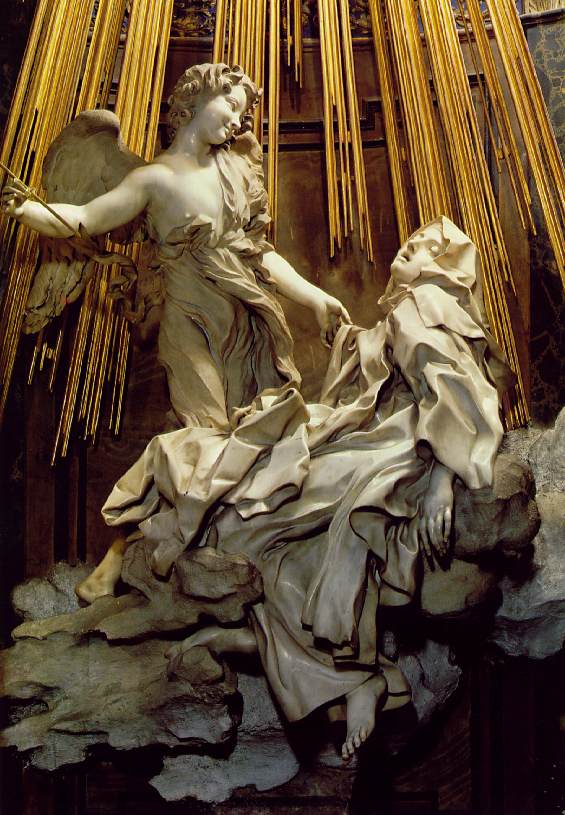We made it to, er..most of Mass late this morning at St. Peter in Chains Cathedral in Cincinnati. It was my first visit there – went to the mother St. Peter in Chains in Rome, after great effort (it was the only time in Rome we ever felt lost.), but the one time I tried to visit our version, it was locked up.
We stayed for the tour of the church offered after the Mass (common in many Cathedrals and other historic churches we’ve been to. Last time was across the river in Covington), which was brief, but interesting, despite the fact that this is not, IMHO, on of the most "magnificent churches in the country" as their brochure brags. The history, though, is intriguing. Originally finished in 1845, in the Greek Revival style, it went through some transitions:
After serving as Cincinnati’s cathedral for nearly one hundred years, St. Peter in Chains found itself in a rapidly deteriorating section of town with quickly disappearing parish community. The building itself was in need of substantial repair. As a result, Archbishop John T. McNicholas decided, in 1938, to abandon the old cathedral and made the newly built St. Monica church in Fairview his cathedral church. But in 1950, shortly after becoming Archbishop of Cincinnati, Archbishop Karl J. Alter, taking note of the city’s intention to invest substantial money and effort into a revitalized downtown, decided to completely restore and enlarge the old cathedral and return it to its former status as cathedral church of the Archdiocese. The work began in 1953, adding the transepts and an entirely new and greatly expanded sanctuary, sacristy, rectory, convent and office areas. The rededication took place on November 3, 1957 with week-long ceremonies and celebrations.
The most fascinating detail, and one which I’d like to return to study without a (naturally) restless baby running laps are the Stations – which are enormous, the primary wall decorations, and in the style of Greek vases:

The guide pointed to one bit of decoration above the stations, and indicated that it was unfinished (it was lacking some ornamentation its companions had), and he said this was traditional in churches – to leave some aspect of the work unfinished to symbolize the fact that this isn’t yet the End. Can anyone verify?
Odd historical nugget: Behind the sanctuary, in the hall in front of the (large) sacristy and (small) museum, stands a carriage. Yes, a mid-19th century carriage which belonged to Bishop John Baptis Purcell. Whose long, otherwise distinguished episcopacy ended in disgrace as he allowed his brother, a priest, to handle financial matters, not only of the archdiocese, but of a number of ordinary people as well, people who did not trust banks. The money was lost, an coadjutor appointed, and Bishop Purcell retired to the grounds of a convent outside the city from whence his carriage was eventually retrieved.
(The original Don Corleone?)
(Listeners of Cincinnati talk radio will get that one…unfortunately!)
A valuable, educational visit to a structure that has its points but is not exactly moving or inspiring – being as it is a combination of the original Greek Revival style with the renovations of the Schematic, Moderne 50’s.

